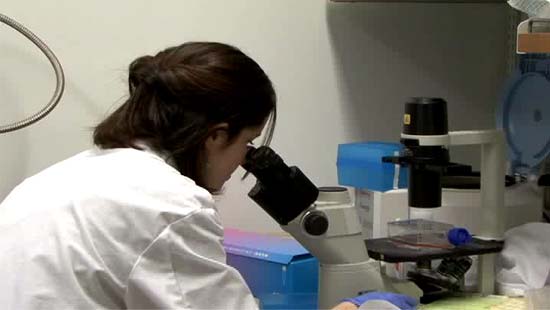Colon Cancer Screenings Are Paying Off in Saved Lives

Colon cancer cases and deaths are down in the United States, according to a new report from the Centers of Disease Control and Prevention.
Between 2003 and 2007, the prevalence of colon cancer decreased 13 percent, and the death rate declined 12 percent, the report said. That means about 66,000 cases and 32,000 deaths were prevented.
The numbers could be reduced further if more people were screened, the CDC said.
Although colon cancer screening is becoming more common, about a third of Americans ages 50 to 75 are not up to date in their screenings, the report said. And about 22 million adults in this age range say they have never been screened.
Colon cancer screening can identify abnormal growths and doctors can remove them before they turn into cancer.
"We now understand that colon cancer screening can save your life, and more and more Americans are taking advantage of it," CDC director Dr. Thomas R. Frieden said at a news conference today (July 5). But Frieden added that the number of screenings is beginning to level off and more needs to be done within the health care system to keep increasing screening rates.
Some 65.4 percent of eligible adults were screened in 2010 for colon cancer. Increasing screenings to 70.5 percent by 2020 — the CDC's goal — would save an additional 1,000 lives each year, the CDC said.
Get the world’s most fascinating discoveries delivered straight to your inbox.
Who gets screened?
Colon cancer is the leading cause of cancer death among non-smokers in the United States, according to Frieden. In 2010, more than 53,000 people died from the disease, and treating the disease cost $14 billion.
The new report used data from a national telephone survey to determine the number of eligible adults screened for colon cancer.
Between 2002 and 2010, colon cancer screening increased to 65 percent from 52 percent. That coincided with drops in colon cancer cases and deaths. Between 2003 and 2007, the rate of colon cancer cases per 100,000 people dropped from 52.3 to 45.4, and the death rate dropped from 19.0 to 16.7.
About half of the decline in incidence and mortally can be attributed to the uptick in screenings, the CDC said. The other half can be attributed to a decline in risk factors for the disease, including smoking, and improvements in colon cancer treatment.
In 2007, the highest incidence of colon cancer was reported in North Dakota (56.9 per 100,000) and the lowest in Utah (34.3 per 100,000).
Increasing screening
The CDC recommends that everyone age 50-75 and younger adults who are at high risk for the disease get screened for colon cancer. Acceptable screening methods include:
- A test for blood in the stool (called at fecal occult blood test, or FOBT) that is done at home every year.
- A flexible sigmoidoscopy done by a health care provider every five years combined with a FOBT every three years.
- A colonoscopy performed every 10 years.
The biggest reason eligible adults don't get screened is that doctors aren't recommending it, Frieden said. Systems that keep track of who has been screened and send reminders may help increase screening rates.
The Affordable Care Act also will reduce financial barriers to colon cancer screening by expanding insurance coverage and eliminating screening co-payments, the CDC said.
Pass it on: The latest CDC statistics on colon cancer bring good news, but more still needs to be done to increase screening rates among eligible adults.
This story was provided by MyHealthNewsDaily, sister site to LiveScience. Follow MyHealthNewsDaily staff writer Rachael Rettner on Twitter @RachaelRettner.

Rachael is a Live Science contributor, and was a former channel editor and senior writer for Live Science between 2010 and 2022. She has a master's degree in journalism from New York University's Science, Health and Environmental Reporting Program. She also holds a B.S. in molecular biology and an M.S. in biology from the University of California, San Diego. Her work has appeared in Scienceline, The Washington Post and Scientific American.


